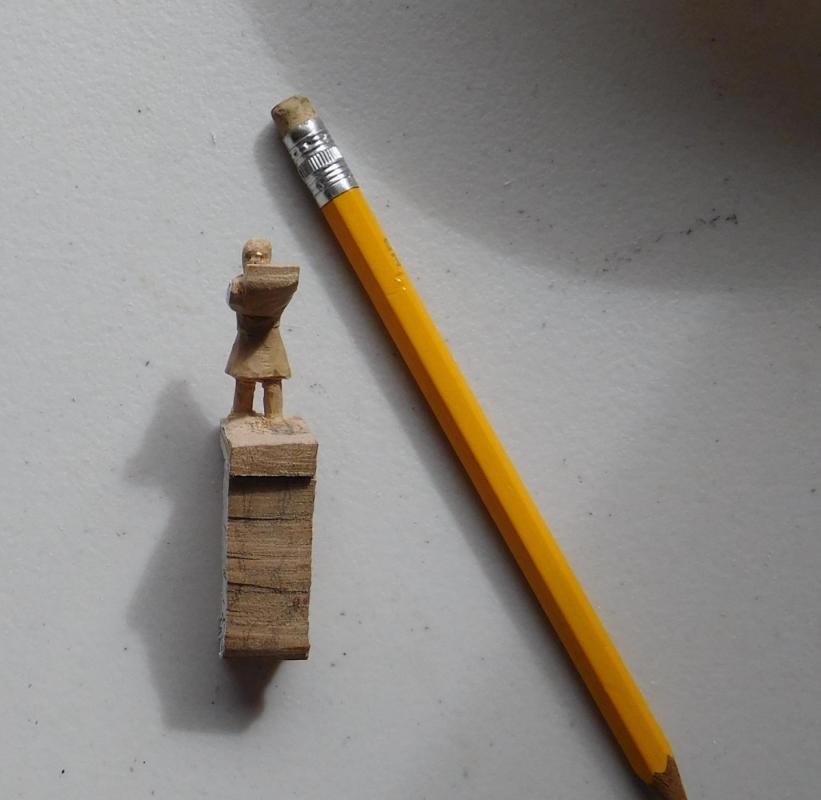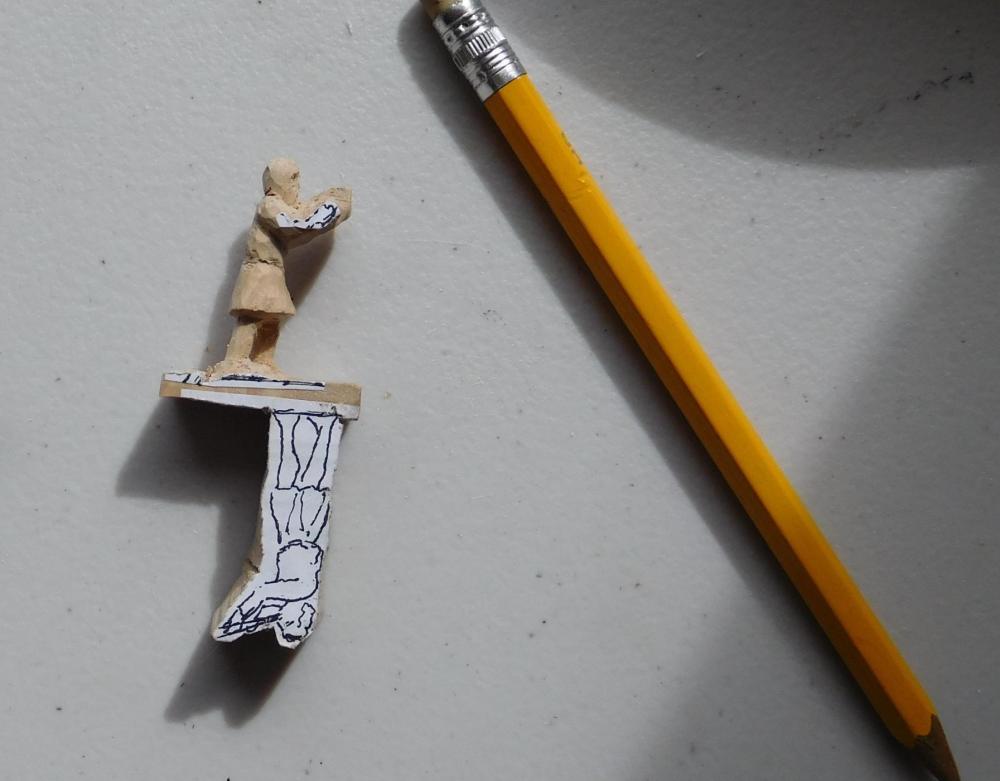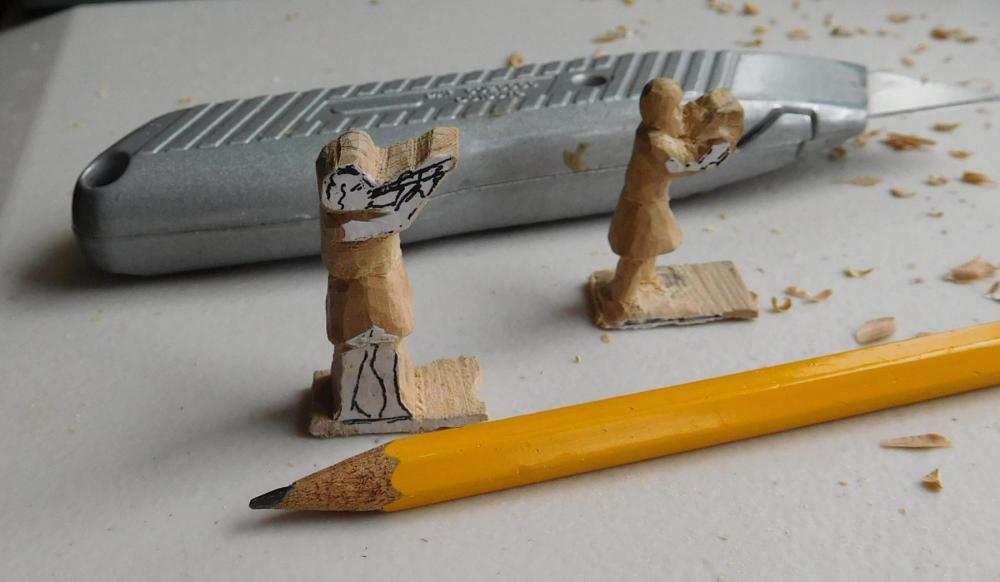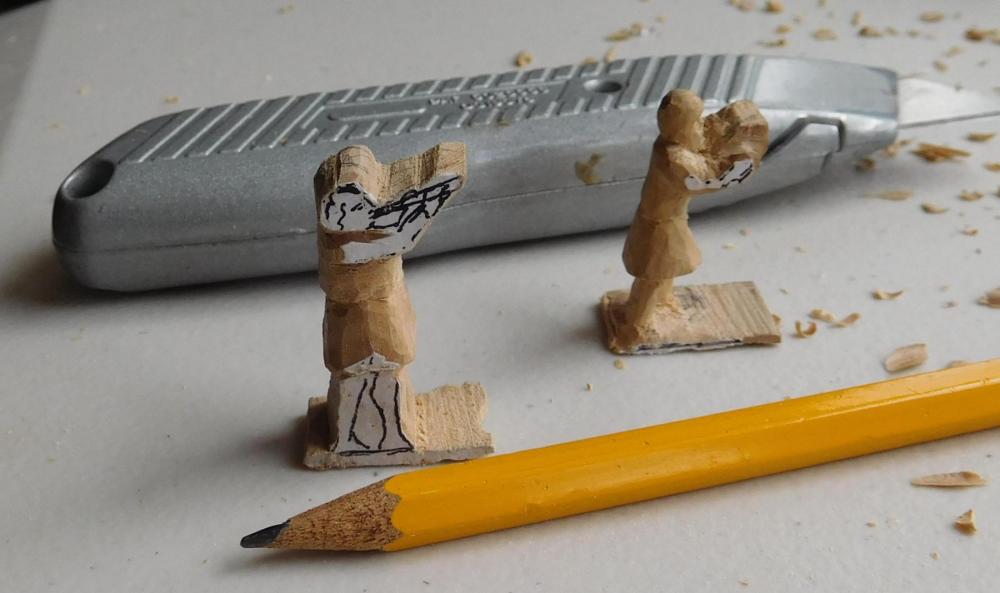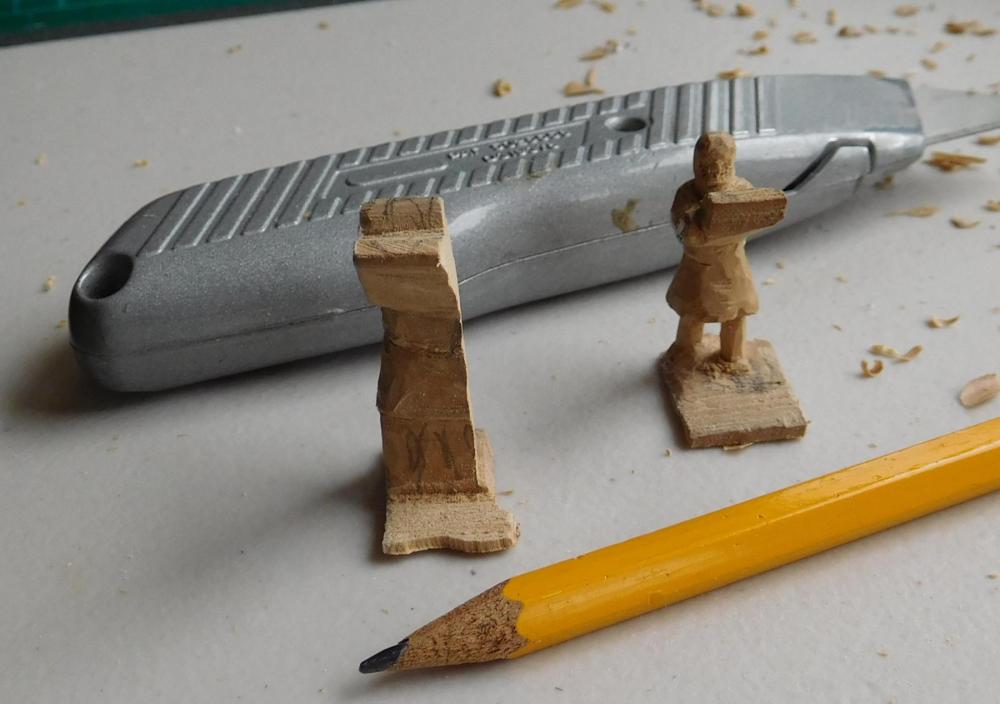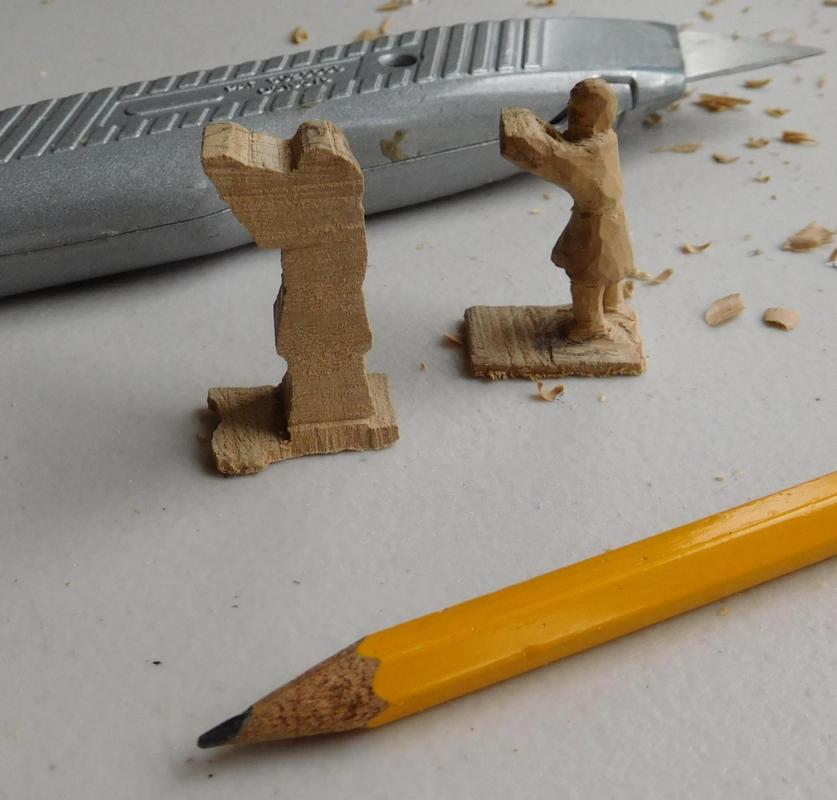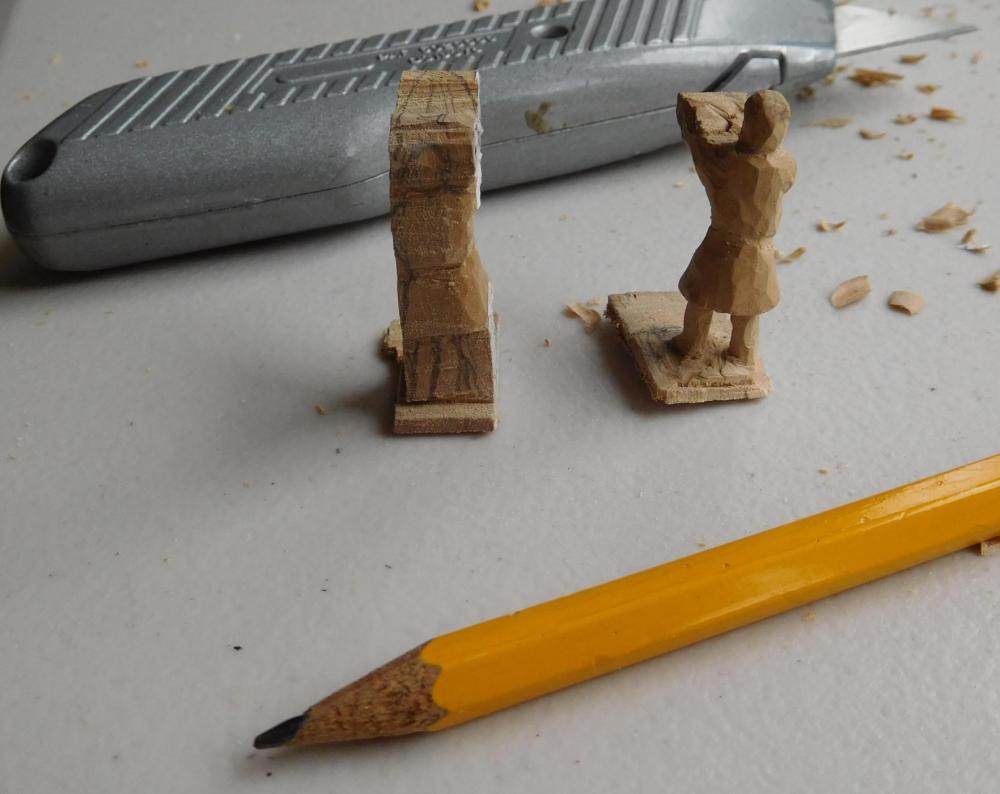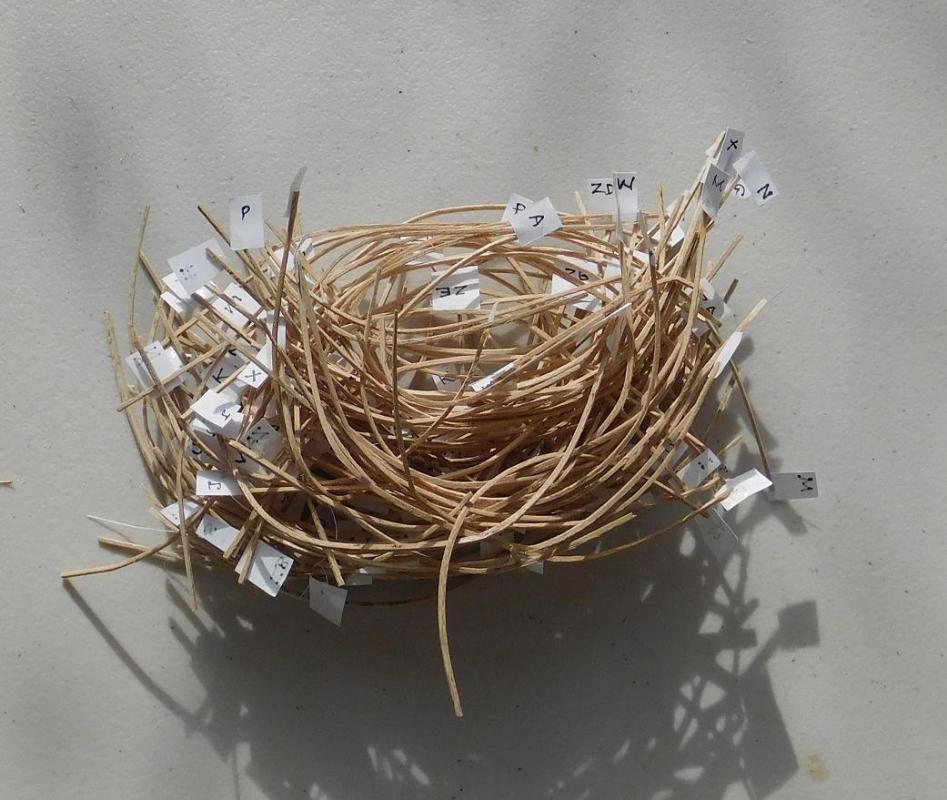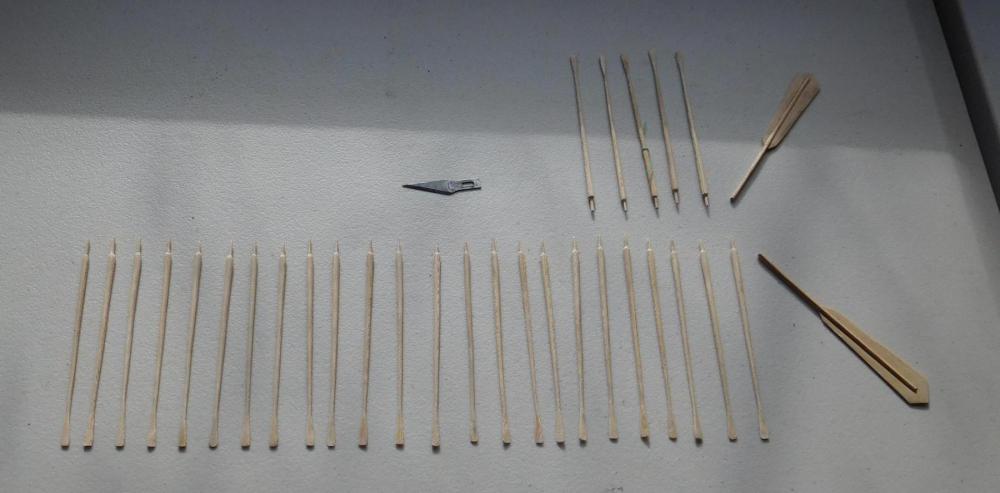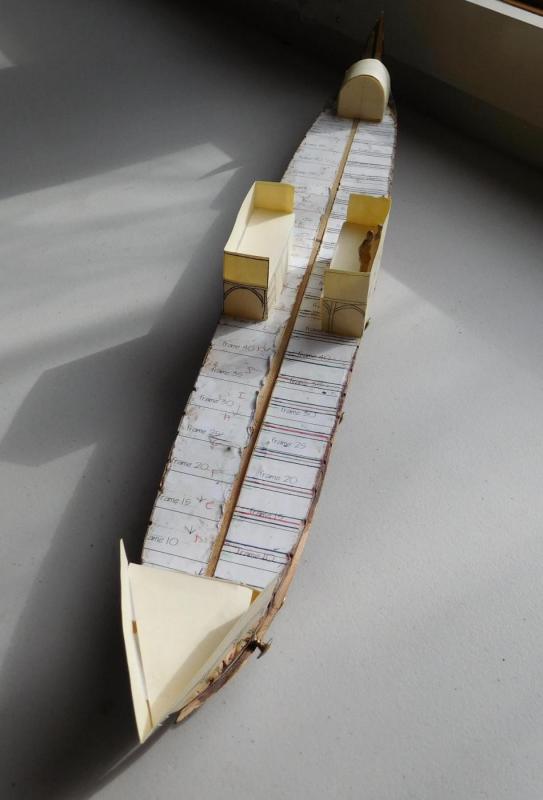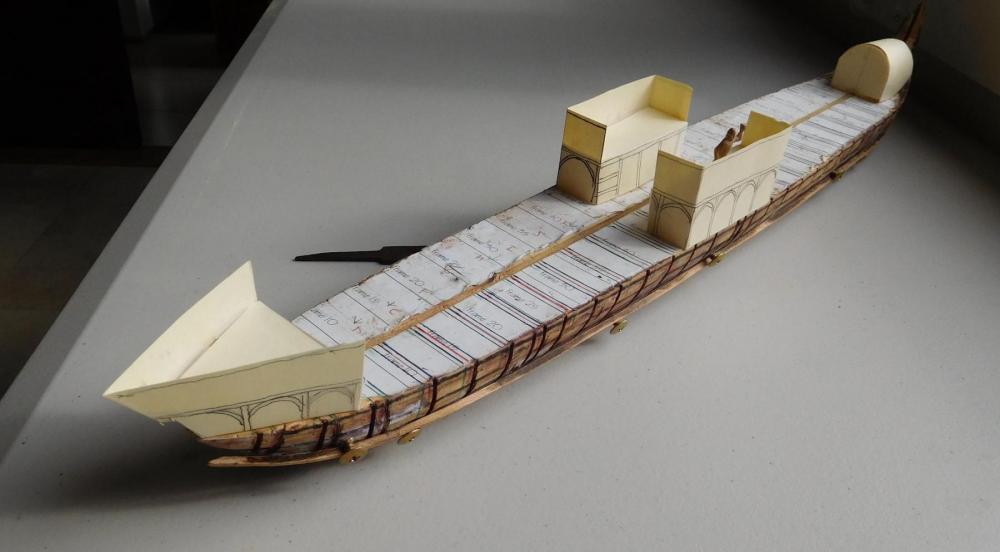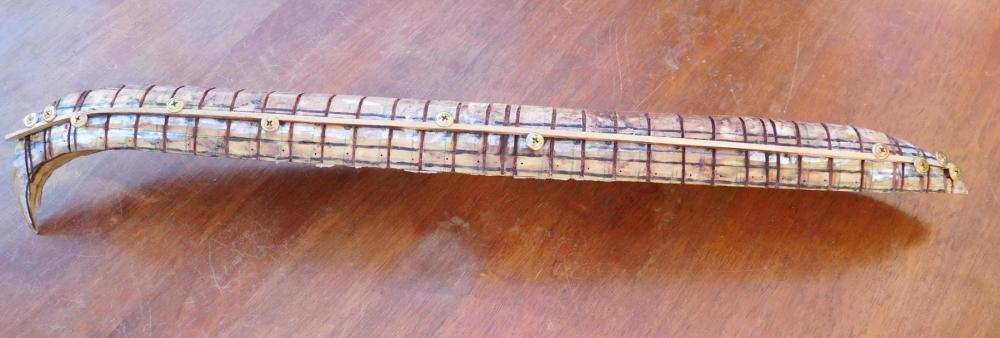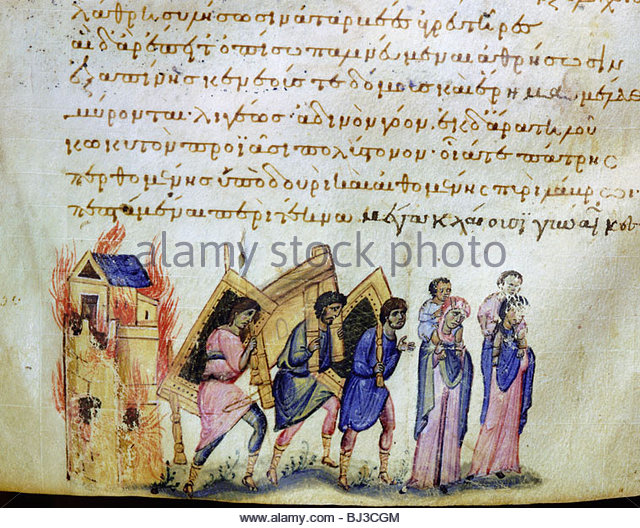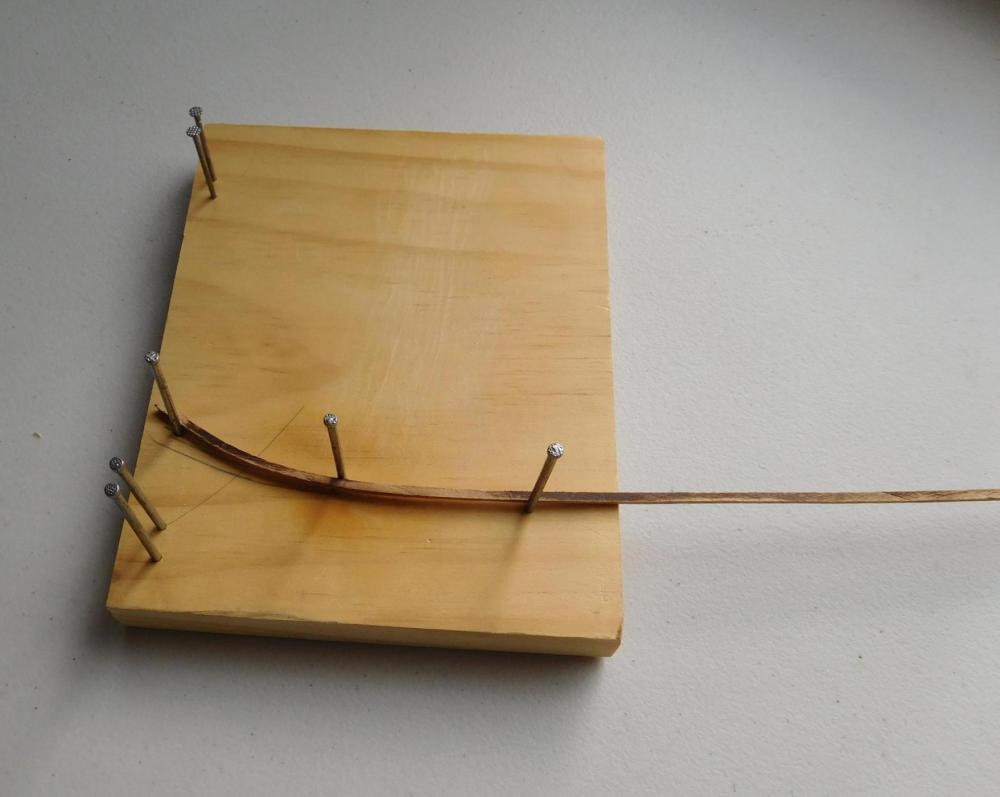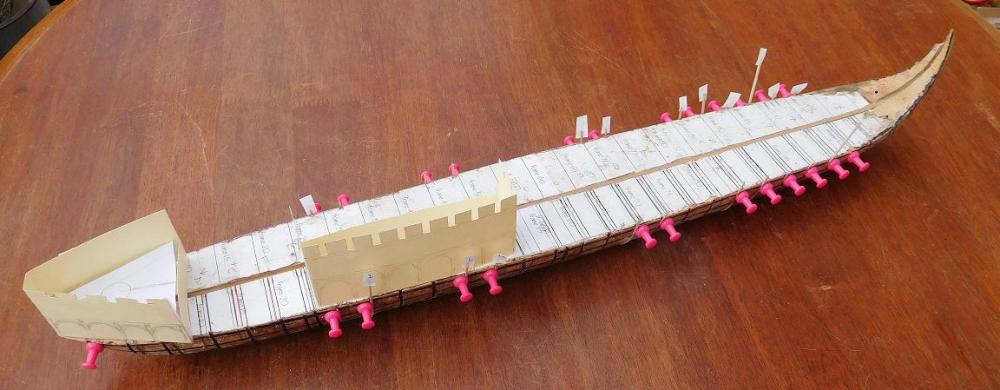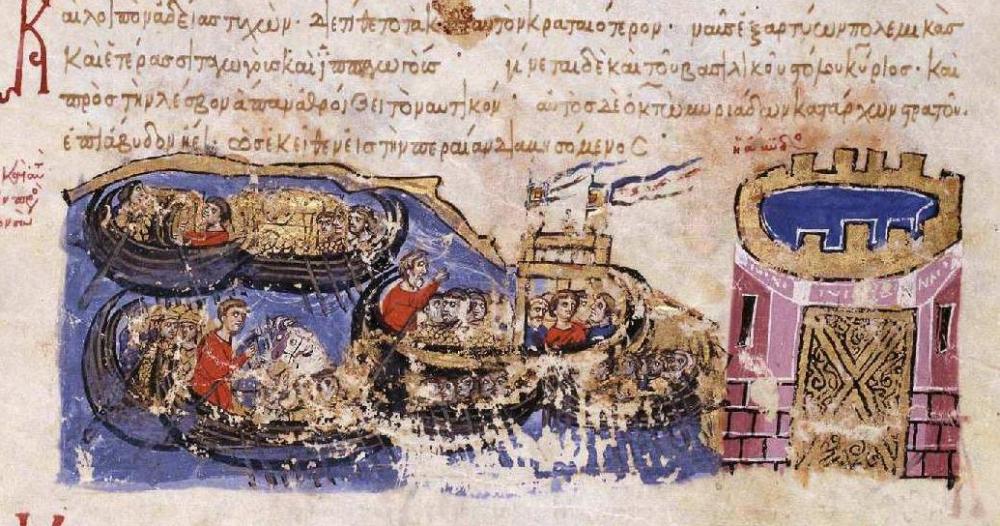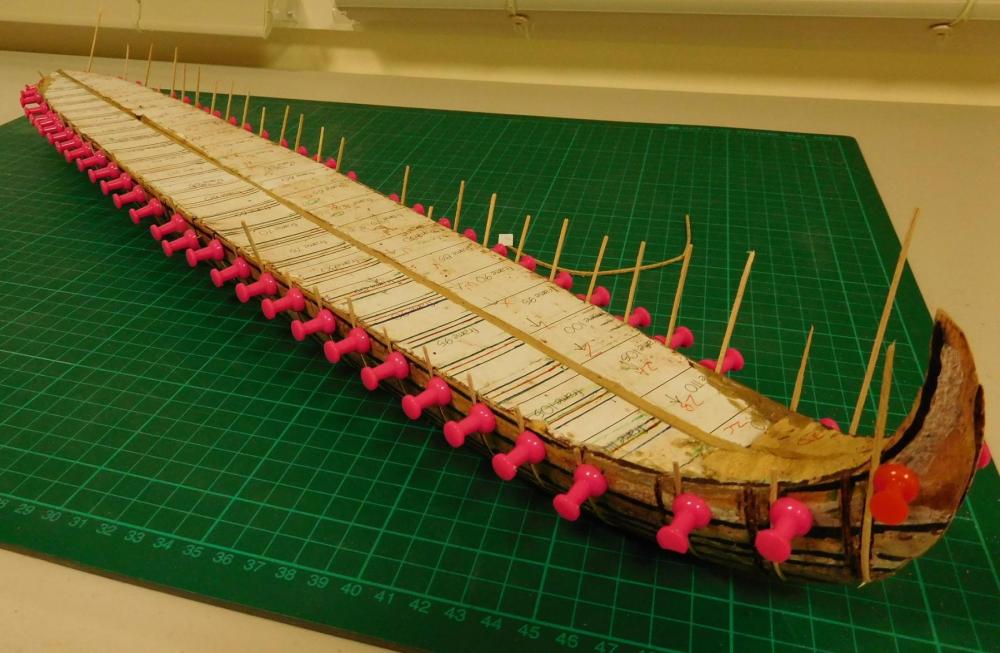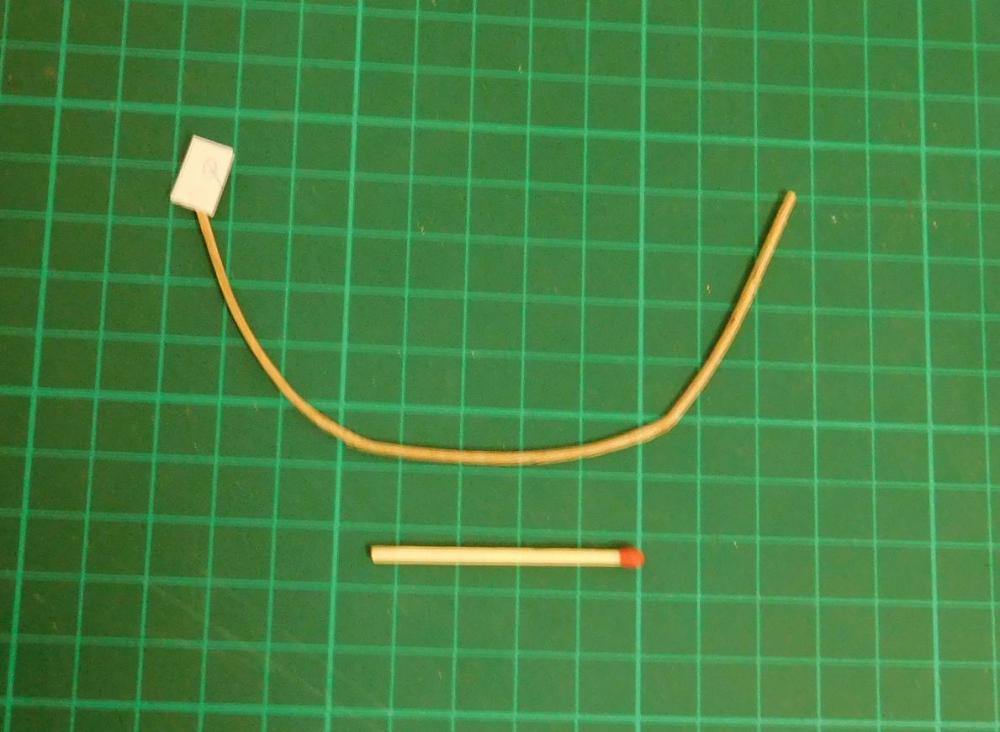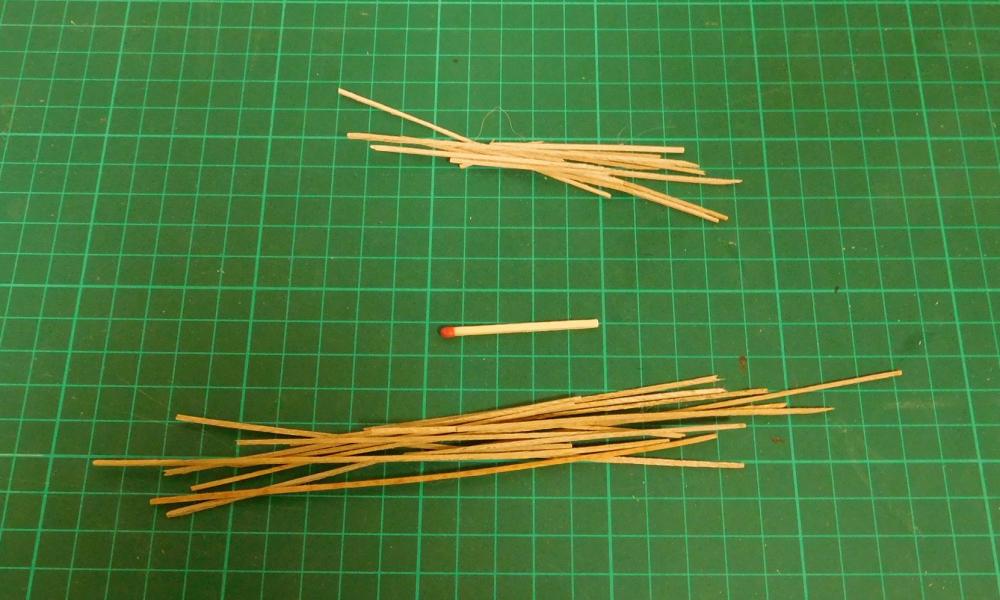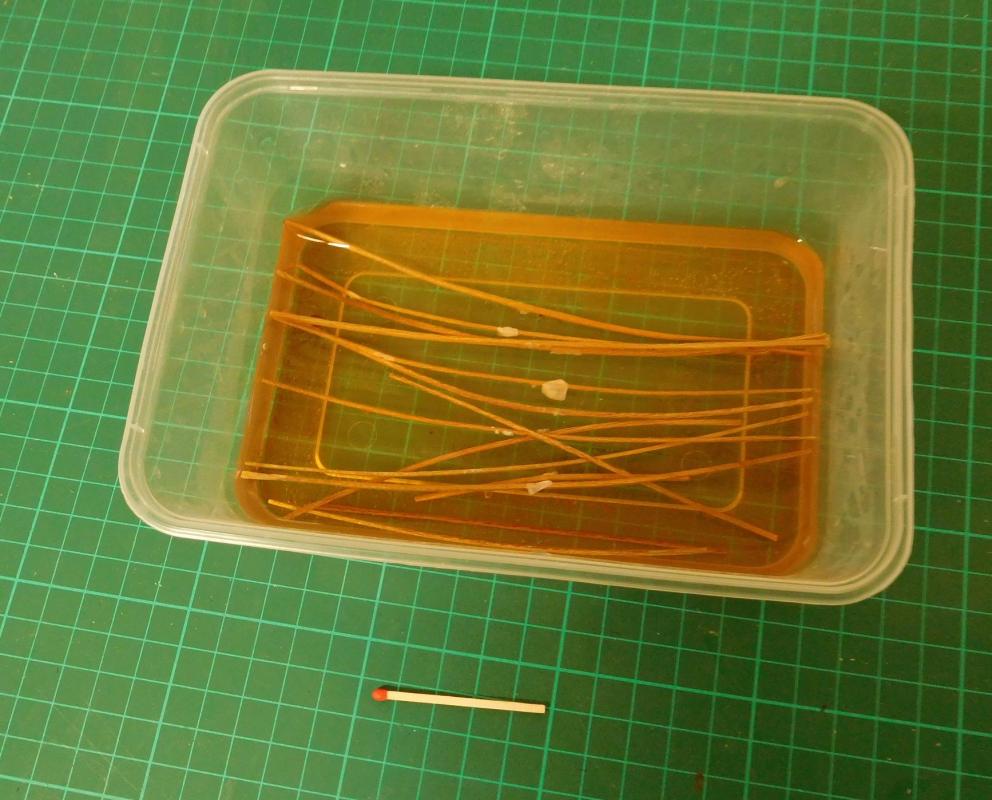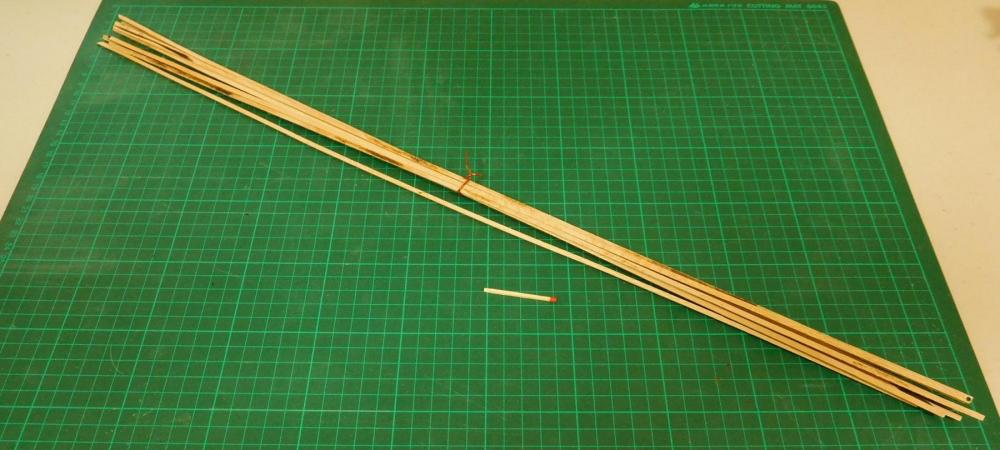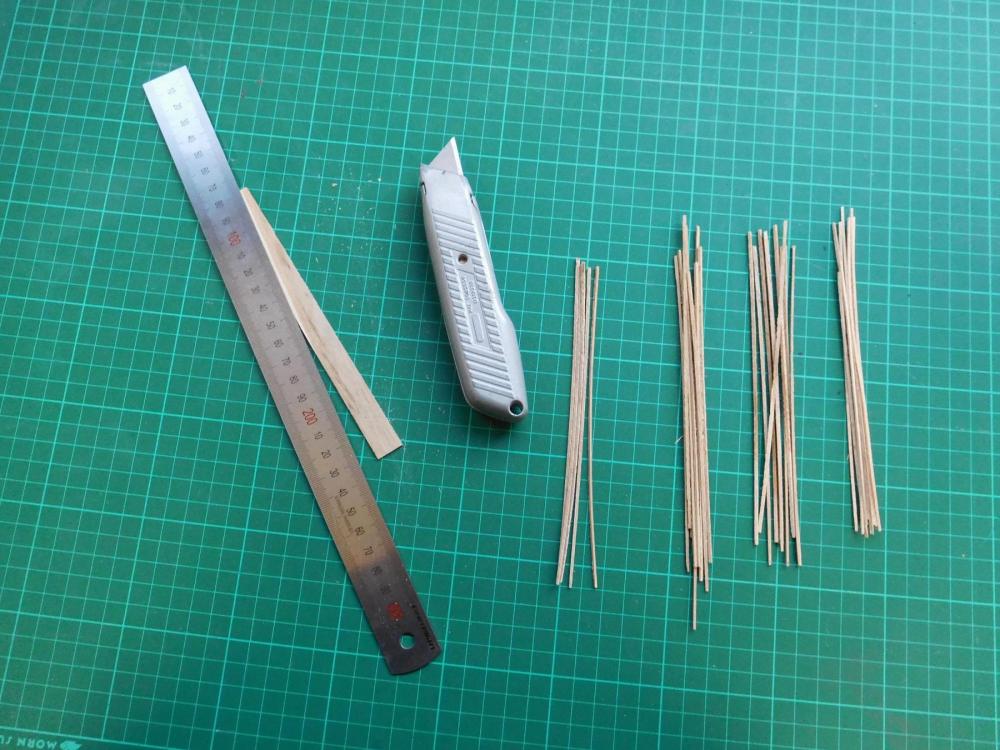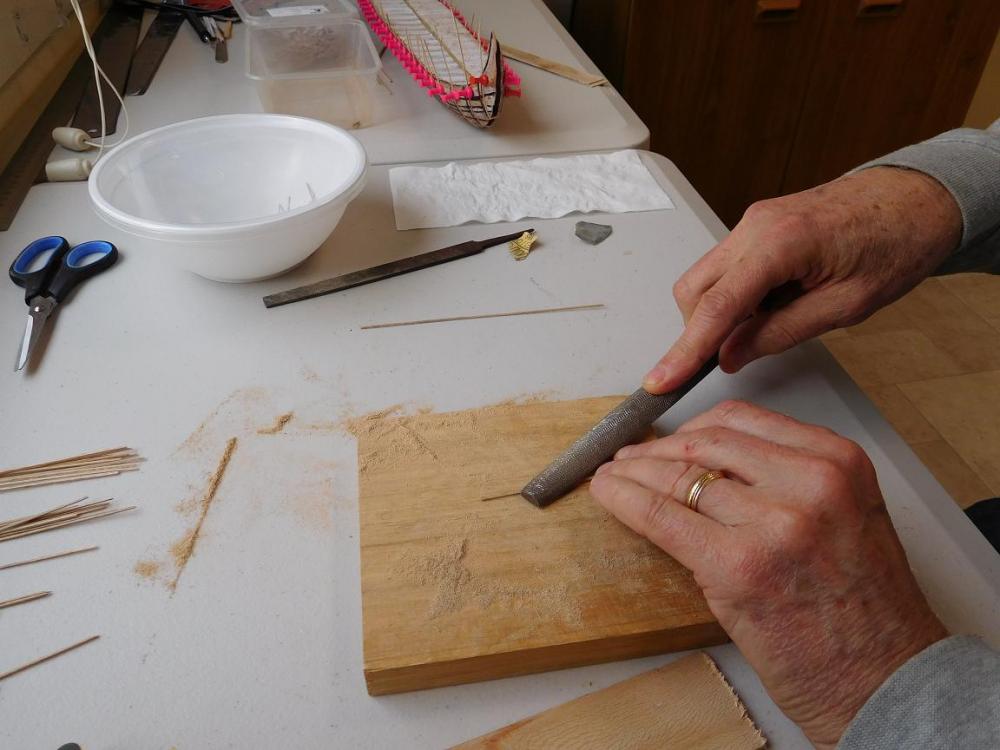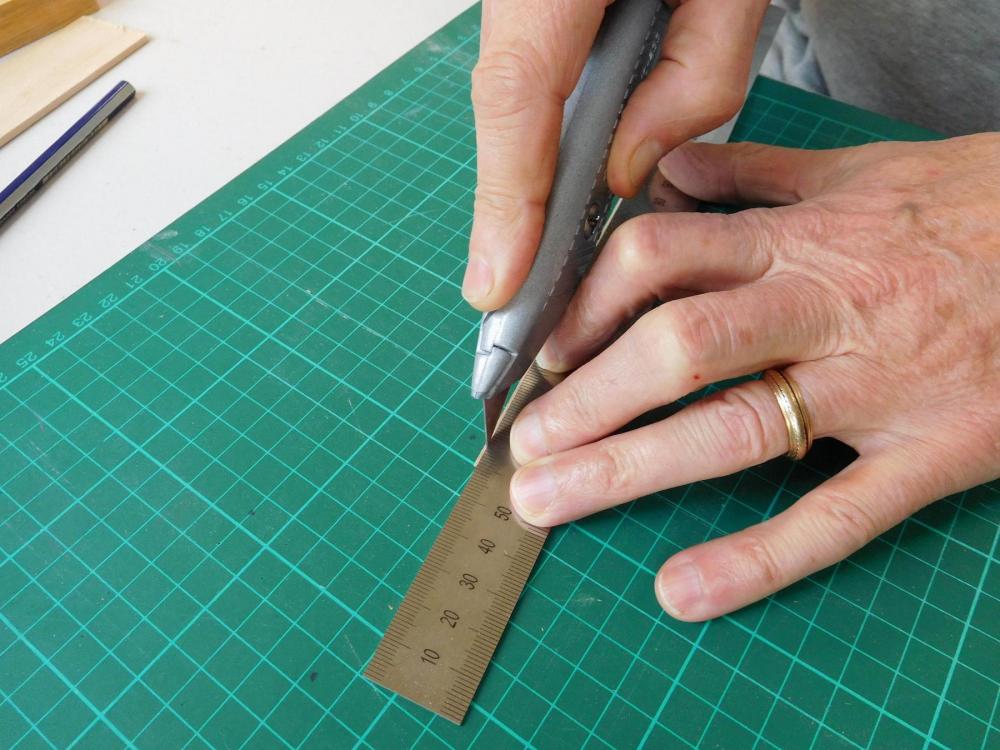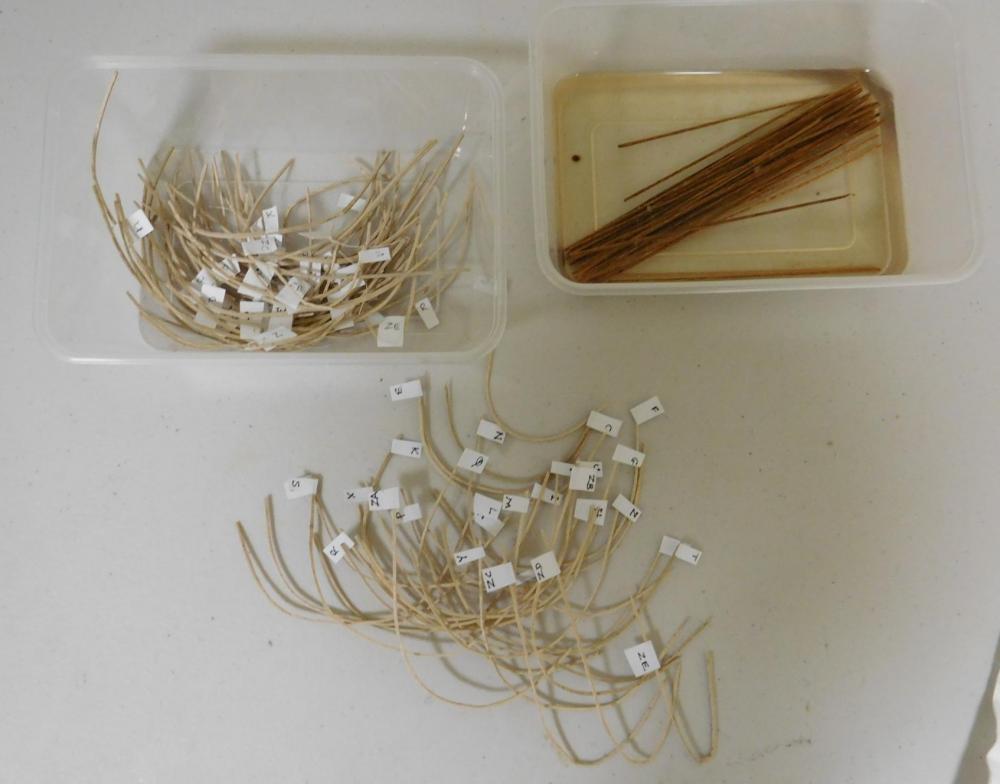-
Posts
7,987 -
Joined
-
Last visited
Content Type
Profiles
Forums
Gallery
Events
Everything posted by Louie da fly
-
I'd never seen these oars before - thanks very much for posting them. But are those other things steering oars? It seems strange that there are three of them for a single ship. Steven
- 170 replies
-
- gokstad
- dusek ship kits
-
(and 1 more)
Tagged with:
-
Torbogdan, do Dusek specify the shapes of the bireme's oars? You might like to have a look at the contemporary representations of Ancient Greek galley oars among the images here. While doing my dromon, I've got very interested in oar shapes. I've made mine as close as I can to contemporary representations, but as no oars have ever been found, it's largely educated guesswork. Steven
- 170 replies
-
- gokstad
- dusek ship kits
-
(and 1 more)
Tagged with:
-
I think you have to take time and place into account, Druxey. I really don't know about the drum, but it certainly appeared in Hollywood epics like Ben Hur. But then they also perpetuated the myth that the Romans used slaves to man the galleys. Certainly, there is contemporary evidence for the use of flutes both in a Byzantine and an Ancient Greek context. The guys are 1:50 scale, and I've already made one. But I wasn't all that happy with him - I think these will be better. I'll be mass producing the oarsmen, and apart from them I'll have the two steersmen, the flute player and probably the captain reclining in his krabbatos. Steven
-
I've now done 36 oars for the upper bank. Only 14 left to go! (I'm not going to do the lower bank until later, when the hull's pretty much made). I've bent several wales and have re-configured where the wales go, after having another look at the archaeological finds from Yenikapi. Looks like I won't have so many wales to do, which is a bonus. And I'm working on two figures - a steersman and a flute player (who gives the time to the oarsmen)
-
I've broken and thrown away maybe 5 or 6 oars, but on purpose - they weren't good enough. I find that when I try to hurry, the quality goes down dramatically. Trouble is, I keep forgetting the lesson and have to re-learn it by messing up good oar-blanks.
- 170 replies
-
- gokstad
- dusek ship kits
-
(and 1 more)
Tagged with:
-
Very nice build, Jack. It'll be good to see it all displayed. I envy you only having to make 30 oars. My dromon has 100, and I don't have a lathe. I'm up to 36 so far . . .
- 170 replies
-
- gokstad
- dusek ship kits
-
(and 1 more)
Tagged with:
-
The other thing is that these ships were very vulnerable to the weather. They simply wouldn't have put out from a protected harbour if the winds were strong. Steven
-
Yes, but that only really applies to ancient Greek vessels. Leo is pretty specific about the use of planks for the castles. Steven
-
Druxey, the cardboard mockups are a bit misleading. I don't think the bulwarks themselves would be closed - the castles would be up above the decks, supported by columns. I've drawn the columns (and arches) on the cardboard mockups, but I wasn't prepared to go to all the work of cutting out the gaps when I was just trying to work out shapes and proportions. But they are fortifications - as Leo wrote; "fortified with planks", to protect the marines inside. I agree about the windage issue, but if the castles aren't too large it shouldn't be too big a problem. And they were only used on the largest dromons, so they shouldn't be too large in proportion to the size of the ship itself. Ancient Greek biremes appear to have had something like latticework screening as protection for the lower oarsmen, but I believe the problem being solved in that case was to let them get enough air. And it's possible that in battle the screens were covered in leather. Speaking of which, according to Professor Pryor the problem of sufficient air for the lower oarsmen on a dromon still hasn't been satisfactorily solved. The evidence all points to their having been fully decked, but if that's the case, airflow wouldn't have been sufficient for men working as hard as these. It's currently just one of those mysteries. There's no evidence, written or pictorial, to suggest an answer.
-
Nice work, Ian. Have you thought of a figurehead for her? The Gokstad ship was found without any - in fact, apart from the Oseberg ship which is a special case, no figureheads have been found for Viking ships. Though other things have been found, like carved ends of tent poles, bed ends etc.Might be work a google search. Also, (this time before you do anything about it!), the Gokstad ship's shields were painted alternately black and yellow - one black, one yellow, one black . . .).
-
I’ve now finished all the frames – 124 of them, each with its little paper tag to tell me where it goes. And I’ve so far carved 30 oars of the 50 needed for the upper bank. This means I’ve got enough upper deck oars for one whole side of the ship, with some left over. I'm a lot happier with their consistency - they all look very much the same now, instead of having differences that were obvious to the naked eye. Maybe I'm getting better at this stuff! I’ve had my first experiment with bending the wales. I don’t have a steamer so I soaked each wale in water and fixed it in place using large headed screws as clamps, and then ran a heat gun over it. It worked after a fashion – the wale took the shape of the plug reasonably well, but not completely. Particularly at the ends the curve wasn’t tight enough – it sprang back a bit. The one I worked with was one of my “throwaway” wales – if I stuff it up it doesn’t matter – and it’s a little shorter than the others - too short to get a good purchase on the ends to bend them properly. However, even the longer ones will have the same problem. I needed a way of putting bending force on the ends and clamping them there. So I put together a simple jig to tighten the curve after the initial bending, just using a bit of wood and some nails. And it works! So now I’ve started using my ‘good’ wales, and I’ve done the initial curving on two of them. There’s still some adjustment and tweaking to be done, but it looks like I’ve got a workable technique. While I’ve been working on shaping the frames and wales I’ve also been looking at how the superstructure will work. According to the 10th century treatise “On Sea Warfare” by Emperor Leo VI: The dromon should have a siphon (flamethrower) in front at the prow . . . . Above this siphon there should be a kind of floor of planks fortified all around with planks, so that marines can stand on it to fight the enemy attacking from the prow . . . So dromons had a forecastle raised above the siphon for marines to stand and fight from. Moreover, they should set up xylokastra [wooden castles], fortified with planks, on the large dromons ‘towards the middle of the mast’, so that men can stand on them and throw into the middle of the enemy [ship] great millstones or heavy iron [weights] like sword-shaped blooms . . .. The statement ‘towards the middle of the mast’ implies some sort of fighting top halfway up the mast. But it was usual practice for dromons to lower their masts before going into battle, as ships of the time had weapons designed to cut shrouds so the mast came crashing down on deck. A fighting top would be a liability. Professor Pryor in Age of the Dromon proposes that the passage above has been incorrectly copied by a mediaeval scribe, and that the original Greek is more likely to have read “around the middle mast” or “around the middle [i.e. halfway between] of the masts”, or even “around the mast of the middle” (i.e. a mast stepped midships). He proposes two castles, one either side of the ship, with a catwalk between allowing easy access between bow and stern. This would also allow room for the lateen yard, which would have been obstructed by a single central castle. This idea is supported by Leo’s reference not to a castle, but to castles. I took the forecastle and xylokastra from the illustrations in Age of the Dromon, but I had to make some adjustments. Their floors are higher off the deck – the forecastle needed room below it for access to the siphon apparatus, and the xylokastra had to be high enough for the oarsmen below to row without hitting their heads. And their sides had to be higher to properly protect the marines standing on them, so I placed the bulwarks at chest height, with battlements on top. In my original drawings it sort of looked ok, but once I made up cardboard mock-ups and put them on the hull, it looked totally wrong. The forecastle was too big and too high, and the castles were too high and too far forward. And all that superstructure so far forward would weigh the ship down by the bow. I started by removing the battlements – after all a dromon’s primary purpose is attack, and the battlements would have interfered with the marines lifting their “millstones and heavy iron weights” high enough to drop them onto the enemy ships. I made the forecastle shorter – it still left plenty of room for the fighters. I also angled the forepart of the triangle forward, in line with a dromon illustration found in Malaga in Spain. It started looking better. The floor of each xylokastron will be about a metre (3’3”) above deck level. they can’t be too long because galleys are notoriously unstable, and too many marines standing above decks along one side, as they would be when fighting another ship, would make it even more unstable. (a galley can only heel about 10 degrees before the oarports are under water). I shortened the castles moved them aft, half way down the ship. It looked better still, while allowing enough room for 5 or 6 marines to stand and fight from it (any more might capsize the ship). At the prymne (poop) - though this may or may not be an actual raised deck – there is a krabbatos (berth) for the captain, probably with an arched awning over it, as both earlier and later galleys had. There’s still enough room either side for the steersmen to stand. You can see the little guy standing on the castle. I've worked up designs for two more crewmen - the helmsman and the man who gives the oarsmen the time with a flute/trumpet thingy, plus a lion's head for the siphon to look out of and scare the enemy. But that will take a while to do. The word used for the captain's berth is one usually used for beds, so perhaps it was some kind of day-bed the captain could either sleep in or sit on for councils of war. An 11th century Byzantine picture of refugees shows two people carrying beds (and one with a table). Perhaps it was like this? I’ve made the castles about 1.3 metres (4’3”) wide, which should give enough standing room on top as well as space on deck to walk between them and enough room for the oarsmen to row. They’ll be open at the back with a railing to stop the marines falling off backwards. There’ll be an opening at one end of the railing with rungs to climb up. The forecastle is about 0.9 metres (3 feet) above the deck to give space for the siphon and its equipment. Access from the deck will be the same as with the xylokastra. The mid-12th century copy of the Chronicle of John Skylitzes held in the Biblioteca Nacional in Madrid contains many illustrations of warships, and one illustration shows a ship with a xylokastron. I’m using that as a model as well.
-
I realise it's too late for your build, Ian, but I figure this might be worthwhile for everybody interested in Viking ships. I thought I'd seen a photo years ago of a stempost from a Viking ship, and lo and behold! I was right. Here it is. Steven
-
After a delay due to various unavoidable factors I’ve finally completed the last set of frames and bent them to shape on the plug. Unfortunately, now I’m not happy with some of the first ones I did – they’re not quite the right shape and I’ve got them soaking so I can re-bend them. Though I've replaced the water, it's gone a rather dark brown due to residue in the container from the tannin in all the wood I've been soaking. As I mentioned before, over half the last batch of frames snapped in two as I tried to bend them and I had to start over. Since then I’ve noticed three on the plug that hadn’t snapped completely in two but had partially broken at the bend. Following the technique of another modeller on this forum (forgotten who it was, but thank you!) I managed to plug up the break with a mix of PVA glue and sawdust (fortunately I had a LOT of sawdust from filing the frames down to shape). The frames were still in the plug when I did this and I was worried the glue would make them stick in the grooves and I’d have to chisel them out, wasting them. But all went well, and I’m happy to have retrieved 3 frames that would otherwise have been thrown away. Here’s a photo of one, as good as new. I’ve put to one side the strips that I’d trimmed down to make into frames but broke or were made out of ‘snappy’ wood. I might be able to use them when I build the light wooden superstructure. The man across the road with the bench saw kindly cut all my wales for me from 3mm planetree timber he’d earlier cut from some tree loppings I picked up on the side of the road. So now I have about 16 wales 3mmx3mm (1/8” square) which I now have to bend to shape. Now I have to make a steamer for myself to bend the wales. I’ve been looking up how to steam and bend timber. The steam box seems very simple, but I have to scout around for a source of steam. The most likely is an old tea urn, if I can lay my hands on one. Fortunately I’m only going to need 10 wales, so I have 6 to experiment on and waste if things don’t go well as I’m learning how to do it. The admiral has very kindly given me an old white pillow case which has reached the end of its usable life – as a pillow case. The fabric is very thin now, and is ideal for sails, so I’ve got enough fabric to equip a dromon flotilla! Steven
-
It's very true. Galleys (full size) had very low freeboard and couldn't cope with waves or swell more than about a metre/yard. History is full of sccoumts of entire fleets of galleys being sunk by unexpected Mediterranean storms. Yet galleys dominated the Mefiterranean for maybe 2000 years. Steven
-
Dick I take on board your comments and to be frank I think I haven't previously given enough thought to this issue. Druxey, your advice seems to be the way to go. With such frail frames and planks, I think that unless I make very sure the wales are pre-formed exactly to shape they're likely to deform the rest of the hull, so I'll have to take vdry great care to get them right. Steven
-
It's a bit frustrating cutting and shaping all these frames, soaking them for days and then having half of them break the moment you try to bend them. But it looks as though I can tell the good wood from the bad. If it's light brown it's ok. If it's sort if greyish it's likely to break. So I have maybe another 15 new ones to make and shape and bend. Fortunately I have plenty of wood to work with. And anyway it'll all have to wait till I get home. Steven
-
Quite right, Dick. It's certainly an issue. The plug will act as the jig, and I'm hoping that the wales (there are five each side) will give the hull rigidity as I'm doing the planking. I think I'll have to put the wales on first (they're about 3mmx3mm) and then plank between them. I'm still trying to work out what will be the best sequence with frames, keel, keelson, wales and planks. At the moment, though, I'm back to square one with the frames. About half of them broke when I tried to bend them to shape. I think I chose the wrong wood. It's too coarse grained - I think the ones that broke are sapwood while the good ones are heartwood. I've got to make a bunch more frames and start again. But I'm off to Sydney tomorrow for a few days so there'll be another gap before the next instalment. Steven
-
That's a lovely piece of work, Dave. Steven
- 962 replies
-
- sovereign of the seas
- ship of the line
-
(and 1 more)
Tagged with:
-
Thanks everybody for all the 'likes'. Druxey - yes, I'm pretty happy with the finish on these. It would probably be nice to have all the equipment and do it faster, but I think after all that work I probably have more of a sense of achievement than I otherwise would have. Trouble is, most of each frame will be covered up by the deck anyway, so really I'm doing it because otherwise I'd always know I'd accepted second best. Thanks for the comment, Glenn. I appreciate the feedback, especially from people whose work I respect, like you and Druxey. Steven
-
Wonderful work Glenn. She's really starting to take shape. Your build log is a real inspiration. Steven
-
It's been a while since I posted last. I've been working on frames, but life's been getting in the way as well (I came down with the dreaded Lurgi and was not able to work for a while). I had already made 93 of the 124 frames needed. Here is a photographic record of making the last 31 frames, which are 1mm x 1mm (1/25 inch) in cross section. Cutting them accurately to such a small size is difficult, and I've found pretty much impossible in the real world. The sheet of wood I made them from was cut for me by the guy across the road with a bench saw not really suited to the job, so thickness varied from 1mm to 1.3mm. Then cutting a sliver 1mm wide with a Stanley knife is pretty hard to do without stuffing it up completely, so I erred on the conservative side figuring I can always take some wood off, but I can't put it back on. You might notice there are actually more than 31 frames in the pile. I made extras in case of breakages while bending them to shape, which happens every now and then. After I'd cut out the frames it was time to file them to size and shape, using a bastard (medium) file. Takes a while, and I had to quit at one point when I broke three frames one after the other. I came back after a bit of time off, and filed down the rest of them. After filing, I used wet and dry sandpaper to smooth off the corners, which were a bit rough after the filing. Here are two frames - one freshly cut and the other filed to size. Next job is to soak them in water for at least a day, preferably longer, so they'll bend properly without breaking. A take-away food container is ideal for the job. While they were soaking, I undid the previous 31 frames from the plug and labelled them with little slips of paper so I could tell them apart. So here are all the frames - 62 I'd already made, 31 just taken off the plug, and the last 31 (plus extras) soaking.
About us
Modelshipworld - Advancing Ship Modeling through Research
SSL Secured
Your security is important for us so this Website is SSL-Secured
NRG Mailing Address
Nautical Research Guild
237 South Lincoln Street
Westmont IL, 60559-1917
Model Ship World ® and the MSW logo are Registered Trademarks, and belong to the Nautical Research Guild (United States Patent and Trademark Office: No. 6,929,264 & No. 6,929,274, registered Dec. 20, 2022)
Helpful Links
About the NRG
If you enjoy building ship models that are historically accurate as well as beautiful, then The Nautical Research Guild (NRG) is just right for you.
The Guild is a non-profit educational organization whose mission is to “Advance Ship Modeling Through Research”. We provide support to our members in their efforts to raise the quality of their model ships.
The Nautical Research Guild has published our world-renowned quarterly magazine, The Nautical Research Journal, since 1955. The pages of the Journal are full of articles by accomplished ship modelers who show you how they create those exquisite details on their models, and by maritime historians who show you the correct details to build. The Journal is available in both print and digital editions. Go to the NRG web site (www.thenrg.org) to download a complimentary digital copy of the Journal. The NRG also publishes plan sets, books and compilations of back issues of the Journal and the former Ships in Scale and Model Ship Builder magazines.




